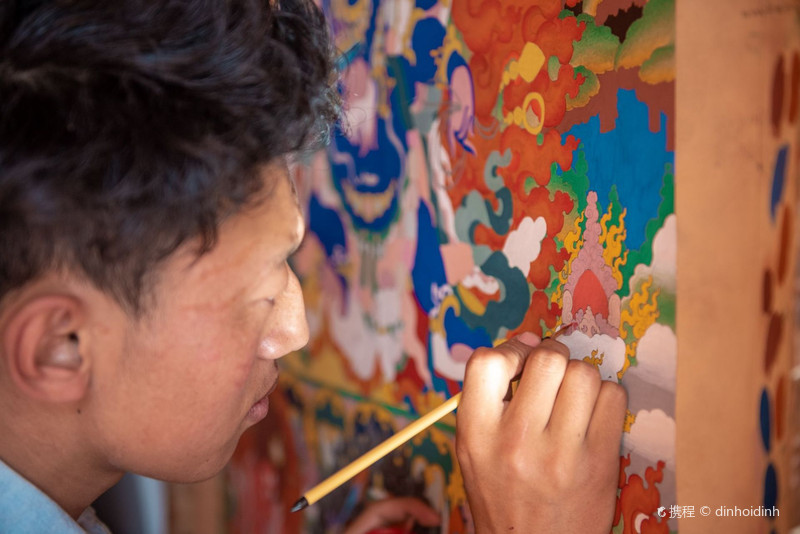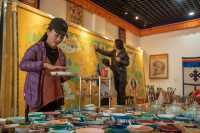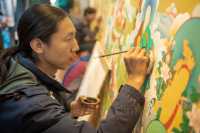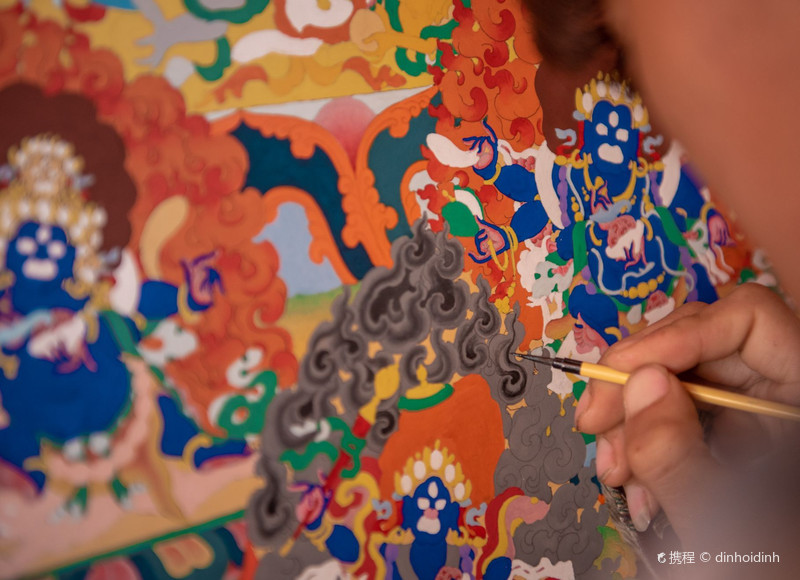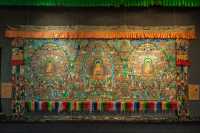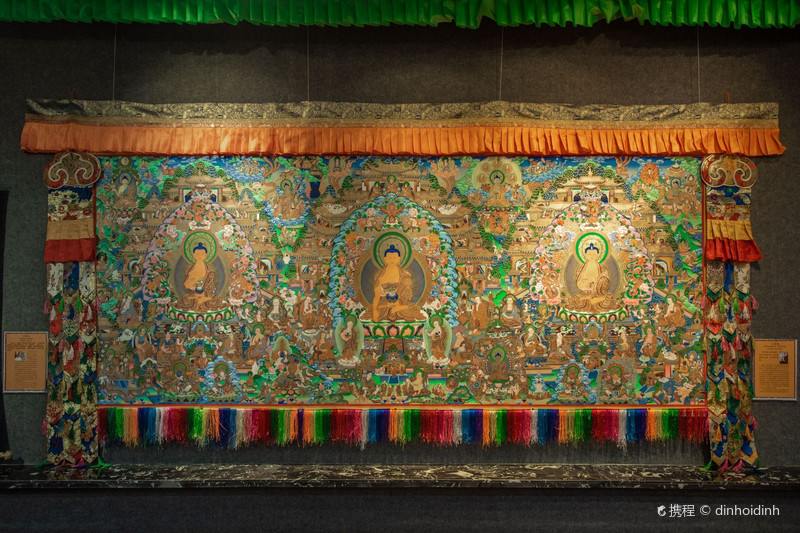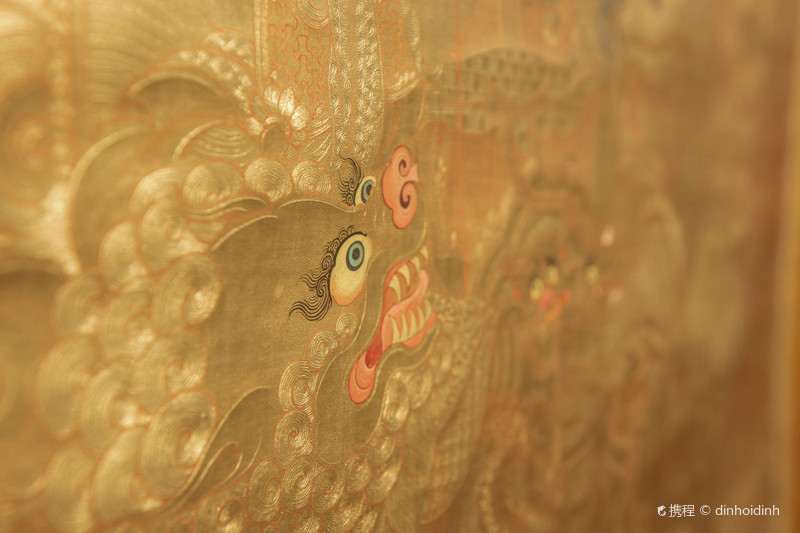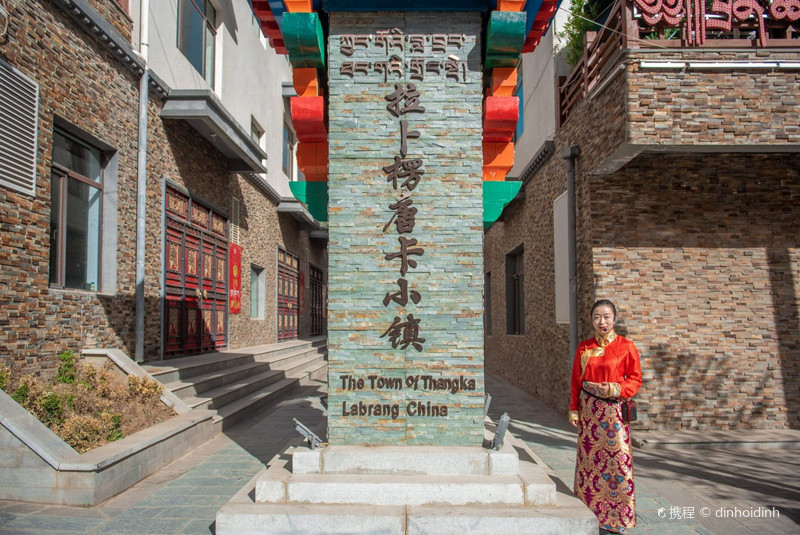Tangka is a unique painting art form in Tibetan culture. The "Encyclopedia" known as Tibetan is also a precious intangible cultural heritage in the folk art of the Chinese nation. The creative process of Mintangka is very particular, from the pre-painting ceremony, preparation of canvas, positioning of drafts, Coloring, hooking, painting gold, eye opening, to sewing and opening light, etc. have to go through more than a dozen processes. It takes more than ten days to draw a simple Tangka, and it takes several years to complex it. Xiahe County has built a small town of Labrangka, China, with its endowment of cultural resources. This is a display and experience base of Tangka art, inheritance and training base, creation and sales base. Tangka Town currently has dozens of enterprises and studios. The famous painters have Tangka National representative inheritors of Xigebu and Jiaobajiabu, and Tangka Craftsman Dan Zeng. Gayang Sonnan and others. Their Tangka works in Gansu, Qinghai, Sichuan, Tibet and other Tibetan areas and developed cities in China have a large number of favorites and collectors. Tangka is generally divided into four kinds by hand-painted Tangka, namely: Hongtang, Black Tang, Jintang, Caitang. Black Tang is to be painted in red, on black canvas depicting Tangka, generally serious content; Red Tang also refers to the red background of Tangka; Color Tang is the white background depicting colored content, is the most common Tangka; Jin Tang is the most precious, usually after laying gold foil, with agate pen a line of depiction, the effort and skills are other Tangka can not compare.
;
Monibao Tangka Zhanlan Center Review
0 /51 Reviews
Popular Destinations
Ibiza Travel | Phi Phi Islands Travel | Koh Samui Travel | Manila Travel | Da Nang Travel | Reading Travel | Munich Travel | Hamburg Travel | Lisbon Travel | Luton Travel | Fukuoka Travel | Gourock Travel | Preston Travel | Bergamo Travel | Faro Travel | Baguio Travel | Albania Travel | France Travel | Idukki Travel | Morro Bay Travel | Aswan Governorate Travel | Nova Scotia Travel | Kakadu National Park Travel | New York State Travel | Oakland Travel | Albury City Council Travel | Georgetown Travel | Arlanza Travel
Recommended Attractions at Popular Destinations
Bangkok attraction near me | Tokyo attraction near me | Manila attraction near me | Hong Kong attraction near me | Taipei attraction near me | Seoul attraction near me | Los Angeles attraction near me | New York attraction near me | Shanghai attraction near me | Kuala Lumpur attraction near me | Shenzhen attraction near me | Osaka attraction near me | Singapore attraction near me | London attraction near me | Guangzhou attraction near me | San Francisco attraction near me | Beijing attraction near me | Macau attraction near me | Bali attraction near me | Paris attraction near me | Ho Chi Minh City attraction near me | Orlando attraction near me | Jakarta attraction near me | Phuket attraction near me | Chicago attraction near me | Toronto attraction near me | Fukuoka attraction near me | Istanbul attraction near me | Dallas attraction near me | Cebu attraction near me
Popular Attractions
Shanghai Ocean Aquarium | Penida Island | Disneyland Park | Nui Beach | Sagrada Familia | Casa Batlló | Leaning Tower of Pisa | Tokyo Tower | Satya Sagar Water Park | Osaka Aquarium Kaiyukan | Stonehenge | Empire State Building | Top of The Rock | Wailingding Island | Picasso Museum Barcelona | Dubai Frame | Jinji Lake | The Centre Pompidou | Sidi Bou Said | Shambles | Rahman mosque in the business district | Gaultney Memorial Park | Antena TV Torrox Costa | musée des métiers d'autrefois | Pine Beach Zagłębocze | Sunny Meadow Farm | Sanchit Art | Gettysburg Village Stadium 10 | Praça do Vilar Carioca | Complexe Sportif de Lucciana (Charles Galletti)
Popular Travelogues
Bangkok Travelogue | Tokyo Travelogue | Hong Kong Travelogue | Seoul Travelogue | Los Angeles Travelogue | New York Travelogue | Shanghai Travelogue | Kuala Lumpur Travelogue | Shenzhen Travelogue | Osaka Travelogue | Singapore Travelogue | London Travelogue | Guangzhou Travelogue | San Francisco Travelogue | Beijing Travelogue | Macau Travelogue | Bali Travelogue | Paris Travelogue | Ho Chi Minh City Travelogue | Phuket Travelogue | Chicago Travelogue | Toronto Travelogue | Fukuoka Travelogue
Payment Methods
Our Partners
Copyright © 2024 Trip.com Travel Singapore Pte. Ltd. All rights reserved
Site Operator: Trip.com Travel Singapore Pte. Ltd.
Site Operator: Trip.com Travel Singapore Pte. Ltd.

